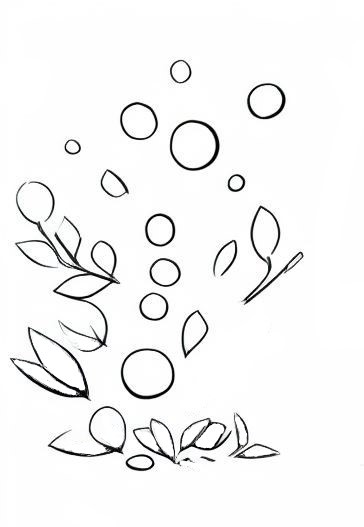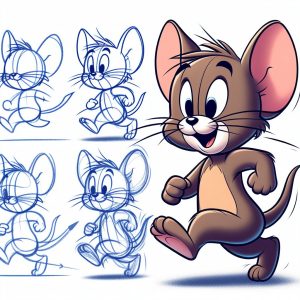Ever found yourself facing a blank page, pencil in hand, wondering how to draw shrubs that transcend the ordinary? The predicament is real, and the allure of capturing the intricate dance of branches and leaves can be both daunting and captivating.
In this blog post, we’ll unravel the mysteries, agitate the common dilemmas, and present a palette of solutions to guide you through the enchanting journey of shrub drawing.
Ready to transform hesitation into inspiration? Let’s delve into the lush underbrush of creativity together.
Materials You’ll Need
To start your shrubs drawing journey, gather the following materials:
How to Draw Shrubs: Step-by-Step Guide
Drawing shrubs requires a solid foundation in sketching techniques, particularly when it comes to capturing the basic shapes that form the essence of these botanical wonders. Here are the steps to follow-
Step 1: Starting with Geometric Shapes
Begin your shrub-drawing odyssey by simplifying complex forms into elementary geometric shapes. Employ circles to outline rounded foliage clusters, ovals for elongated leaves, and triangles to convey pointed or serrated edges.

These fundamental shapes serve as the scaffolding upon which you’ll construct intricate shrub structures.
Step 2: Adding Detail with Freehand Shapes
Transitioning from geometric precision to freehand fluidity, infuse your sketches with organic irregularities. Pay meticulous attention to the natural flow of branches and the subtle variations in leaf shapes.

This phase allows you to introduce an element of authenticity and visual interest into your shrub drawings.
Step 3: Adding Depth with Gradual Shading
Begin with a light touch, gradually building up layers of shading to achieve the desired level of contrast. Blend carefully to smooth transitions between light and shadow, ensuring a seamless and realistic result.

Troubleshooting Common Mistakes
Navigating the intricacies of drawing shrubs is not without its challenges. Recognizing and addressing common mistakes is a pivotal aspect of refining your skills in the art of shrub drawing-
- Overworking Details- When Less is More: One prevalent pitfall is the tendency to overwork details. Resist the temptation to meticulously render every leaf and branch. Instead, adopt a selective approach, focusing on key areas of interest.
Embrace the notion that, in the realm of shrub drawing, less can indeed be more, allowing the viewer’s imagination to play a role in the visual narrative.
- Achieving Balance in Composition: Achieving a balanced composition is an art in itself. Strive for harmony in the placement of shrubs within the frame, ensuring they interact seamlessly with the surrounding elements.
Guard against overcrowding, opting for a deliberate arrangement that fosters a sense of visual equilibrium. Pay heed to negative space, strategically using it to enhance the overall aesthetic appeal.
- Correcting Proportional and Perspective Errors: Mistakes in proportions and perspective can detract from the authenticity of shrub drawings. Conduct a critical review of your work, identifying areas where adjustments are needed.
Utilize measurements and comparative techniques to ensure accurate scaling and positioning of elements. Embrace the opportunity to correct errors, refining your shrub drawings for enhanced realism.
Wrapping Up
As we tenderly conclude our journey through the verdant realms of how to draw shrubs, let the artistry cultivated take root in your creative landscape.
The journey has been an exploration of nuanced techniques, from capturing the intricate dance of branches to mastering the interplay of light and shadow on foliage.
The canvas, once a blank expanse, now breathes with the vibrancy of meticulously drawn shrubs. Remember, the essence lies not just in replication but in the celebration of nature’s beauty translated through your unique perspective.
So, as we bid farewell to this artistic odyssey, take pride in the skills honed and the shrub-strewn landscapes you’ve crafted.




I am sure this piece of writing has touched all the internet users, its
really really pleasant paragraph on building up new
webpage.